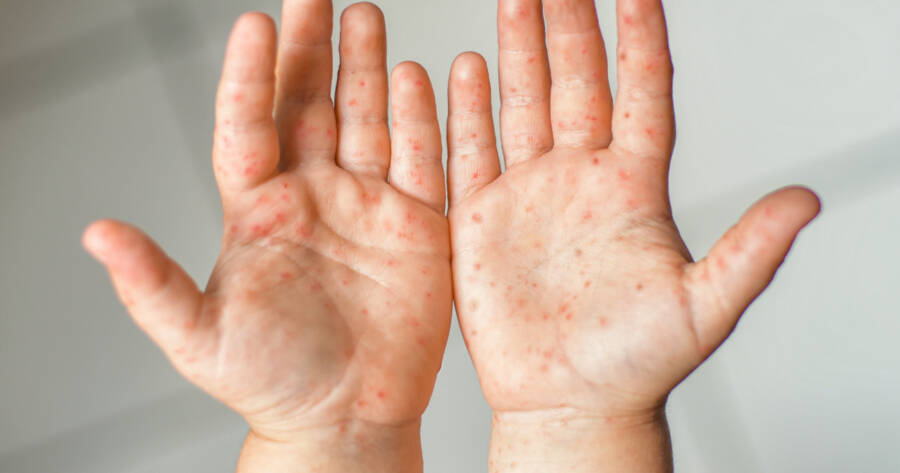Hand, Foot, and Mouth disease can reveal itself in mild or severe symptoms. Fortunately, you can learn everything you need to know about Hand Foot and Mouth disease with a search online right now, which could help you spot early symptoms.
The condition, abbreviated as HFMD, is more than a mere inconvenience — it represents a spectrum of symptoms that can range from barely noticeable to profoundly unsettling. With knowledge, we can approach treatment with confidence.
Recognizing the Basics: Early Signs of HFMD
Often mistaken for the common cold, the early symptoms of HFMD can be subtle. Within the first 1-2 days of the disease, affected individuals might experience a mild fever, sore throat, or a general feeling of being unwell. It’s easy to dismiss these symptoms, especially when they mimic those of numerous other illnesses. However, as HFMD progresses, its distinctive features begin to emerge.
Distinctive Skin Manifestations: The Hallmark of HFMD
After the initial onset, the most recognizable symptoms of HFMD become evident. Small red spots begin to appear, predominantly on the palms of the hands, soles of the feet, and inside the mouth.
These spots often evolve into blisters, which can be painful and make everyday tasks, like walking or eating, challenging. It’s also not uncommon for a rash to appear on the buttocks, legs, or arms. This rash is usually not itchy for children, but adults can sometimes find it uncomfortable.
Oral Distress: The Uncomfortable Reality of HFMD
Inside the mouth, painful sores may develop, typically beginning at the back of the mouth. These ulcers can make swallowing difficult, leading to decreased appetite and potential dehydration. It’s essential to monitor fluid intake during this stage, especially in younger children, as hydration plays a critical role in recovery.
Navigating The Rare But Serious Symptoms
Though HFMD is generally a mild illness, some cases can evolve into more severe conditions. In rare circumstances, viral meningitis can develop, causing symptoms like headache, increased irritability, lethargy, or even neck stiffness.
Another potential complication is encephalitis, an inflammation of the brain, which can manifest with symptoms like seizures or even coma. It’s crucial to be vigilant and seek medical attention if severe symptoms are observed or if there’s a concern about the progression of the disease.
Managing and Alleviating Symptoms
While there’s no specific cure for HFMD, symptom management can greatly improve the comfort of affected individuals. Over-the-counter pain relievers and fever reducers can be helpful, but always consult with a physician before administering any medications, especially to children.
Cool soft foods like yogurt or ice cream can soothe a sore throat and painful mouth ulcers. Staying hydrated with cool water, diluted fruit juices, or oral rehydration solutions is vital. For skin discomfort, lukewarm baths with oatmeal or baking soda might offer relief.
The Common Culprits: Causes of HFMD
The primary cause of HFMD is the Coxsackievirus A16, a member of the enterovirus family. However, other types of enteroviruses can also be responsible. The virus spreads through person-to-person contact, particularly through nasal secretions, saliva, feces, and the fluid from the blisters.
Understanding the cause helps in taking preventive measures, such as proper hand hygiene and avoiding close contact with affected individuals, to reduce the spread of the disease.
Preventive Measures: Staying a Step Ahead
While no vaccine is universally available for HFMD, there are practical steps one can take to prevent its spread:
- Frequent handwashing, especially after using the toilet or changing diapers.
- Avoiding touching the face, especially the eyes, nose, and mouth.
- Disinfecting frequently touched surfaces, like toys and doorknobs.
- Keeping infected children or adults away from school or work until they’ve fully recovered.
Long-Term Effects and Recurrence
While most people recover fully from HFMD with no long-term effects, there have been rare instances of complications like viral-induced heart inflammation. It’s also worth noting that, once recovered, a person can still get HFMD again—though it may be caused by a different strain of the virus. Immunity to one strain doesn’t necessarily offer protection against others.
Find Help Today
Hand, Foot, and Mouth Disease may begin subtly, but its progression unveils a spectrum of symptoms that require understanding and careful management. As with many illnesses, knowledge equips us to face it head-on, offering the best care to those affected and preventing further spread.
While this article has delved into the depth of HFMD symptoms, it only scratches the surface. The digital age offers a wealth of resources at your fingertips—so keep searching online to enhance your understanding even more! What you learn might protect others, as well as yourself!
